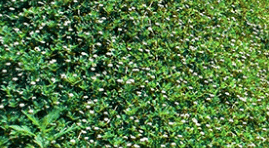If you dream of having a lush garden living in a hot and arid region might be frustrating. After all, maintaining turf with such a climate can be a challenge. You may be wondering if kurapia grass can grow in Arizona.
But we have good news for you: you don’t have to lose all of your hope. Kurapia grass is a drought-tolerant and low-maintenance ground cover that acts as an excellent alternative to turf.
If you live in Arizona, this probably catches your attention. Keep reading this “Kurapia Grass Arizona” essential guide to learning more about growing this plant in your region!
Kurapia Grass Arizona: Is It A Suitable Option?
Kurapia grass isn’t a turf. However, it is a low-growing plant that serves the same function. Plus, it is relatively easy to maintain and doesn’t require mowing.
Does it sound perfect? Well, it is as good as you hear it! But does this plant grow well in Arizona?
Native to Japan, Kurapia grass tolerates various soil conditions and a wide range of temperatures. Because of its deep root system, this plant has a high tolerance for warmth and growth.
Its characteristics make it ideal for growing it in the Arizona climate, even in the desertic regions.
But beware: this plant is a proprietary Japanese plant that can be challenging to find for homeowners. Look for licensed growers in your area. And don’t be scared of the prices.
While purchasing Kurapia grass might sound expensive, you will get your investment back by enjoying a lush ground cover with little to no maintenance.
But to keep the level of maintenance low, you must know how to recreate the ideal conditions for its growth. Jump to the following sections to learn more about it!
Growing Kurapia Grass: Our Tips

While Kurapia Grass is hardy, it will do much better in areas that don’t receive heavy foot traffic. Also, make the necessary amendments to ensure the substrate is well-draining and loamy to get the most out of this plant. You can add compost or manure to improve the nutrient content in the soil and increase water retention.
While this plant will go on without water for long periods, it will be greener (and look lusher) with regular moisture. Commit to watering your Kurapia grass once a week to get the most out of it.
Kurapia grass will thrive under the sun but won’t mind partial shade. But remember to keep watering to a minimum if your plant doesn’t receive adequate lighting. Kurapia grass isn’t susceptible to many diseases or infections, but it doesn’t stand wet roots! Luckily, that will rarely be an issue in Arizona.
How to Plant Kurapia Grass in Your Garden
To enjoy the looks of Kurapia grass in your yard, making the conditions welcoming for its growth is crucial. Before planting it, ensure you remove old grass and weeds. You might have to use treatments if you neglected your garden for a while.
Consider tilting the soil to increase aeration and allow your Kurapia’s roots to get all the oxygen and nutrients they need to establish themselves in the substrate.
Also, if the ground is compact, don’t forget to add some sand to improve the texture.
If you are planting your Kurapia grass around trees, prune their branches to provide adequate lighting. Proper amounts of the sun will make a considerable difference in the growth of your newly planted grass.
If you aren’t in a rush, don’t worry: your plant will grow (slower) even under partial shade. Keep your plant moist during its establishment phase to boost its growth.
Related Articles: How to Grow Grass in Arizona?
